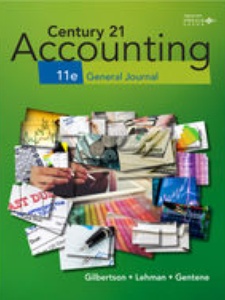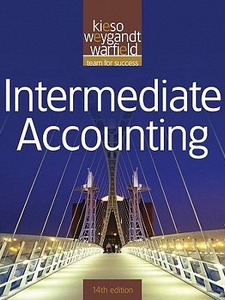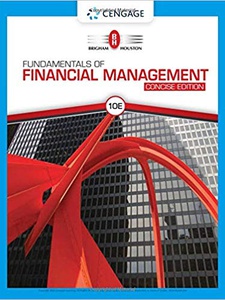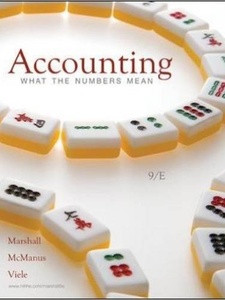Hướng Dẫn Which two actions will help to build a good credit history (choose two.) quizlet ?
Mẹo về Which two actions will help to build a good credit history (choose two.) quizlet Mới Nhất
Bùi Ngọc Phương Anh đang tìm kiếm từ khóa Which two actions will help to build a good credit history (choose two.) quizlet được Update vào lúc : 2022-12-04 17:30:11 . Với phương châm chia sẻ Bí kíp Hướng dẫn trong nội dung bài viết một cách Chi Tiết Mới Nhất. Nếu sau khi tham khảo tài liệu vẫn ko hiểu thì hoàn toàn có thể lại Comment ở cuối bài để Ad lý giải và hướng dẫn lại nha.There are two forms of bankruptcy: Chapter 7 of the Bankruptcy Act (also called the Immediate Liquidation Plan or Straight Bankruptcy), and Chapter 13 of the Bankruptcy Act (also called the Wage Earner Plan or the Regular Income Plan).
In the following table, indicate whether each statement better applies to Chapter 7 bankruptcy or Chapter 13 bankruptcy:
1. This plan is designed for individuals with regular incomes who might be able to pay off some or all of their
debts
2. This plan involves submitting a debt repayment plan in order to pay off your debt in three to five years
3. Under this plan, the court issues an automatic stay preventing collection efforts and wage garnishment.
4. Under this plan, the debtor must follow a strict budget; if the debtor makes all scheduled payments, then the debtor is discharged of any remaining amounts due.
5. This plan provides for immediate liquidation of your assets, which are usually turned over to a
bankruptcy trustee or returned to the lender (for assets used as collateral).
6. This option is permitted when it would be highly unlikely that you could make substantial repayment of your debts.
7. Before you can file for this form of bankruptcy, you must pass a "means test" to ensure that your income is not too high.
 Century 21 Accounting: General Journal
Century 21 Accounting: General Journal11th EditionClaudia Bienias Gilbertson, Debra Gentene, Mark W Lehman
1,012 solutions
 Intermediate Accounting
Intermediate Accounting14th EditionDonald E. Kieso, Jerry J. Weygandt, Terry D. Warfield
1,471 solutions
 Fundamentals of Financial Management, Concise Edition
Fundamentals of Financial Management, Concise Edition10th EditionEugene F. Brigham, Joel Houston
777 solutions
 Accounting: What the Numbers Mean
Accounting: What the Numbers Mean9th EditionDaniel F Viele, David H Marshall, Wayne W McManus
345 solutions
Module 6 Debt Management
Five years ago, John and Barbara, who are in their mid-50s and have one adult child out of college, experienced a sharp increase in income (ten times) within a two year period. Their lifestyle and the complexity of their financial situation increased respectively. Their income statement's bottom line increased and their assets/liabilities expanded as well (third home, credit card debt, etc.) They had no retirement savings and after consulting their accountant, they implemented a 401(k) and defined benefit plan with the dual purpose of deferring taxes and saving for retirement. John and Barbara's increase in income was based upon Barbara's success a new business venture. John is the business manager of the venture. Their financial assumptions were based on unrealistic sales assumptions and their income fell by 65%. As a result, they had a mortgage on a second home in Las Vegas (purchased the peak of the real estate market), less than one month of emergency reserves, and six-figure credit card debt. They were unable to fund their pension obligation to themselves and closed the plan, while also taking the maximum loans from their 401(k)s to pay off their credit cards.
Barbara feels the economy is on the verge of a turn-around. She has an opportunity to expand her business, and if she is right about the economy, this will substantially grow revenue. She will need an additional $50,000 for this expansion. What is the most suitable recommendation for Barbara and John as it pertains to business expansion?
.a
Borrow $50,000 from a home equity line of credit.
b.
Take a $50,000 loan from their 401(k)s
c.
Bring in a qualified partner who is able to commit the capital.
d.
Use part of the cash reserve to fund a portion of the expansion.
Module 7 Financing Strategies
Alice purchased a home this year for $1,500,000 and took out a $1,000,000 mortgage. Alice will itemize deductions on her Form 1040 because they exceed the standard deduction amount. How much total debt can be used to deduct mortgage interest on her tax return?
A.
$100,000
B.
$1,000,000
C.
$750,000
D.
$1,500,000
a.
$1,922.45
*b.
$1,928.62*
c.
$1,884.76
d.
$1,890.80
Steps
g8
n=30g
i=5.55g
pv=284,525
pmt=1624.44
f
72 amort CLX X/Y= -26286.88
284,525-26286.88=258,238.12
258,238.12*1.02=263,402.89
pv=263,402.89
n=180
i=.3208
pmt=xxxxxx=1928.62
Dale Hart, age 42, is a salesman who makes $140,000 per year. He is single, has a lavish lifestyle and enjoys spending money. Last year Dale purchased a new power boat and now he wants to build a boat dock his home so that he doesn't need to keep his boat a local marina:
Dale's Assets
Checking
account $15,000
Taxable mutual fund accounts $93,000
IRA $135,000
Boat $110,000
BMW $80,000
Primary residence $1,200,000
Dale's Liabilities
Credit card debt $20,000
Car payments $7,200 per year
Mortgage primary residence $800,000
Dale met with a CFP® practitioner because he realizes he needs to get his spending under control. His financial planner made the following suggestions and observations. Which suggestion is least likely to help Dale improve his financial situation?
A.
Dale does not have adequate funds available for an emergency and needs the equivalent of 3-6 months of take-home pay held in liquid assets.
B.
Dale should refinance his mortgage with a higher loan amount to pay off his credit card debt.
C.
Dale and the financial planner should create a debt management plan that curtails unessential spending so that Dale can begin building up his cash reserves and save more for retirement.
D.
Dale should arrange to have his bank transfer money automatically from checking to savings, retirement, and/or investment accounts each month to help him begin saving on a regular basis.
Dale Hart, age 42, is a salesman who makes $140,000 per year. He is single, has a lavish lifestyle and enjoys spending money. Last year Dale purchased a new power boat and now he wants to build a boat dock his home so that he doesn't need to keep his boat a local marina.
Dale's Assets
Checking account $15,000
Taxable mutual fund accounts $93,000
IRA $135,000
Boat $110,000
BMW $80,000
Primary residence $1,200,000
Dale's Liabilities
Credit card debt $20,000
Car payments $7,200 per year
Mortgage primary residence $800,000
Dale's financial planner constructed a cash flow statement to identify cash inflows and outflows for the past year. Which statement concerning a cash flow statement is not correct?
a.
The accuracy of the cash flow data depends upon the information a client supplies which include financial statements, bills, tax returns, loan documents and estimates of discretionary spending.
b.
A cash flow statement can reveal positive or negative net worth and identify overall spending patterns.
c.
Data from cash flow statements can be used to perform ratio analysis to compare a client's financial health with established benchmarks.
d.
Cash flow statements can be compared with previous statements to track a client's budgeting and savings progress over time.
Dale Hart, age 42, is a salesman who makes $140,000 per year. He is single, has a lavish lifestyle and enjoys spending money. Last year Dale purchased a new power boat and now he wants to build a boat dock his home so that he doesn't need to keep his boat a local marina.
Dale's Assets
Checking account $15,000
Taxable mutual fund accounts $93,000
IRA $135,000
Boat $110,000
BMW $80,000
Primary residence $1,200,000
Dale's Liabilities
Credit card debt $20,000
Car payments $7,200 per year
Mortgage primary residence $800,000
Dale's credit card carries an interest rate of 19.5% and he currently has a $20,000 liability. His financial planner created a debt management plan that involves paying off his credit card debt in 4 years. His planner also found another credit card with a 9.99% interest rate and a 3% transfer fee. Assuming this liability will be paid in full over the next four years, how much interest can Dale save by transferring his current credit card balance to the new card?
a.
$3,628
b.
$3,884
c.
$4,343
d.
$4,353
Dale Hart, age 42, is a salesman who makes $140,000 per year. He is single, has a lavish lifestyle and enjoys spending money. Last year Dale purchased a new power boat and now he wants to build a boat dock his home so that he doesn't need to keep his boat a local marina.
Checking account $15,000
Taxable mutual fund accounts $93,000
IRA $135,000
Boat $110,000
BMW $80,000
Primary residence $1,200,000
Dale's Liabilities
Credit card debt $20,000
Car payments $7,200 per year
Mortgage primary residence $800,000
Dale wants to take out a $60,000 home equity loan to build the boat dock. Which of the following statements about home equity loans is correct?
A.
The interest on a home equity loan is tax-deductible if used for personal expenses.
B.
Dale cannot take an itemized deduction for the loan interest on Schedule A of his IRS Form 1040 if he takes a standard deduction on his tax return.
C.
The interest rate on the loan is variable and fluctuates with changes in the 10 year Treasury bill.
D.
Interest rates on home equity loans are
generally higher than for other consumer loans, but are usually lower than mortgage interest rates.
Carmen and Rita Salazar are your financial planning clients. Carmen owns and operates a local diner. The couple jointly owns their primary residence worth $950,000. The cost basis of their home is $375,000. To purchase the home five years ago, the couple took out a 30-year $473,250 mortgage with an interest rate of 4.75%. Their monthly mortgage payment is $2,468.70 and they currently have 300 payments remaining.
You decide to calculate the PITI for the Salazars' primary residence after completing a cash flow statement. As a rule of thumb, PITI costs shouldn't exceed 28 percent of pretax monthly income. What is the Salazars' PITI?
Excerpts from Salazar Cash Flow Statement Jan. 1 - Dec. 31, 20XX
Cash Inflows
Carmen W-2 from Diner $350,000
K-1 Earnings from Diner $150,000
Investment Income - Dividend Income 13,572
Investment Income - Interest Income 15,800
Total Income
$529,372
Cash Outflows
•Mortgage payments (principal) $8,827.
•Mortgage payments (interest) $20,797.
•Property tax $23,300.
•Homeowners insurance premium $3,500.
•trang chủ maintenance fees $2,400.
•trang chủ improvement costs $8,000.
a.
0.0999
b.
0.1128
c.
0.1065
d.
0.3423
